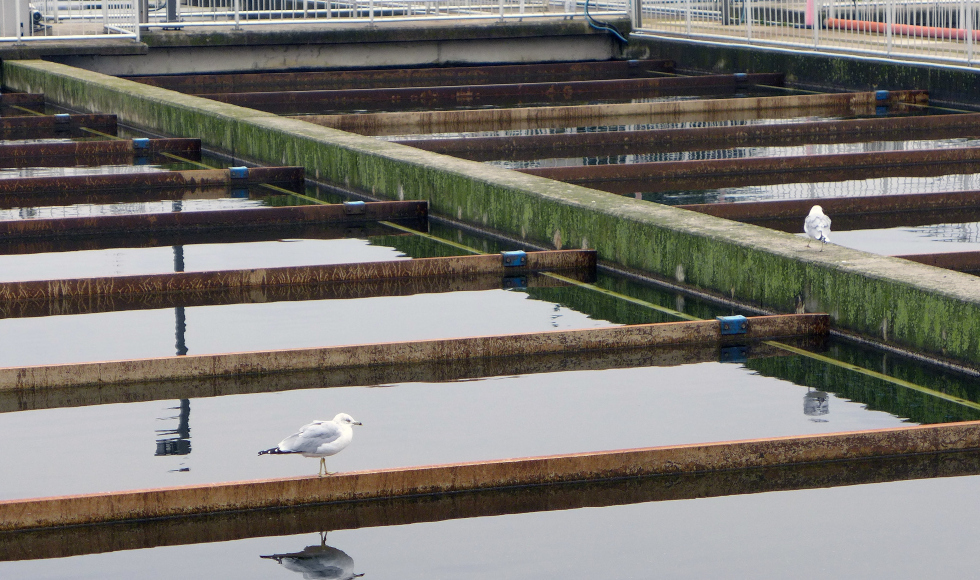McMaster researchers study use of wastewater to track coronavirus

Hamilton's wastewater treatment plant. Photo by Flickr Creative Commons/Joe
BY Michelle Donovan
July 23, 2020
Researchers at McMaster University are investigating how municipalities across the province could begin to test raw sewage for the coronavirus and quickly identify outbreaks.
The wastewater system of Ontario may provide new insights and a non-invasive approach to detect the community spread of COVID-19, one of the biggest challenges facing public health experts.
“We know virus fragments are detected through feces of infected individuals,” says Gail Krantzberg, a professor at the W. Booth School of Engineering Practice and Technology, who is working with colleague and wastewater expert Zobia Jawed on the research project.
“The ability to test quickly and reliably at the municipal level could provide a real-time indicator of how many people are infected and an important tool to manage the implications of moving from phase 2 to phase 3 by tracking the emergence of a possible next outbreak,” she says.

Scientists hope testing wastewater will address the current limitations of clinical COVID-19 testing which include the availability of reliable test kits, false positives, cost logistics and lingering issues of identifying those who may be mildly symptomatic or asymptomatic.
Common lab techniques have been used effectively in wastewater to detect pathological and chemical biomarkers for decades such as polio, E. coli and pharmaceuticals in wastewater. Researchers say it is possible to test for coronavirus in a similar manner and the turnaround time would be rapid.
“We can identify hotspots within the community which might include a specific neighbourhood, school, or a long-term care home, for example,” says Krantzberg.
But first, they must determine whether or not cities have the capacity to fund, implement and maintain the testing.
“Every municipality is unique in terms of size, processes, resources, and technical expertise. What we really need is an agile system-wide approach to ensure we understand these challenges and collectively identify feasible and cost-effective rapid testing technologies and methods which can be employed as part of the existing testing framework for Ontario’s wastewater systems,” says Jawed.
“A true system-wide approach cannot be achieved until and unless we target each and every municipality regardless of their size and geographical location.”
There are more than 400 municipal wastewater treatment plants in Ontario and many more non-municipal wastewater plants—all running a unique sewage system—and researchers hope to collaborate with each of them, but the initial plan is to begin with 30 to 40 plants as well as private labs, and will include First Nations communities, villages and remote communities. Their goal is to build a consortium of municipalities, labs and health professionals to develop a strategy that could be applied to every city, township and village.
When and if testing can begin at the municipal level, the data would be sent to McMaster where an Artificial Intelligence (AI) based system would track, monitor, and assess pandemic threat levels for SARS-COV2.
“Once established, this AI-based threat level assessment system will be able to estimate disease progression within a specific community in Ontario. This system might even serve to measure the effectiveness of community vaccine programs and re-emergence of SARS COV2 or other pandemics or emerging issues in the future,” says Jawed.
The data and analytics will be crucial and become the foundation for evidence-based decision-making for a wide variety of purposes and can be used by decision-makers, policymakers, Public Health officials, wastewater operators, and labs.


